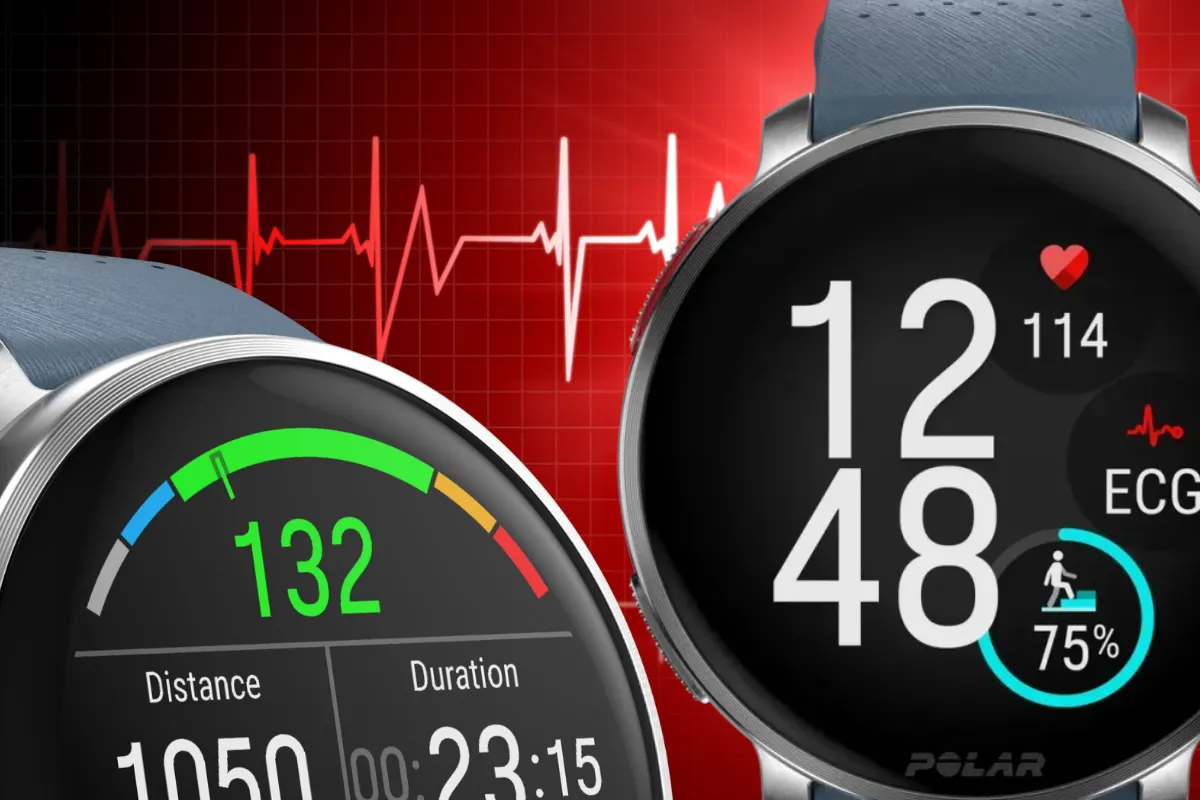
The PrimeFit Journal
Health, strength and mindset coaching for midlife professionals.
Whether you’re over 40, managing a condition like Type 2 diabetes or PCOS, or simply training with more purpose, this is your evidence-based resource for building real strength and lasting energy—without gimmicks or overwhelm. I’m Rob, a personal trainer and nutrition coach, and I use this space to help you live better through smart, sustainable choices.

Discover the Science of Training Zones: Boost Your Performance Today!
Unlocking the Power of Training Zones
As a qualified strength and conditioning and Spartan SGX coach, I've experienced firsthand the significant impact of understanding and utilising training zones on a fitness journey. Whether you're training for a marathon, looking to shed some pounds, or striving to improve your athletic performance, training zones offer a structured way to achieve diverse fitness outcomes.
Why Training Zones Matter
You might wonder, "What's the big deal about training zones?" These aren't just arbitrary numbers; they're rooted in science and physiology. Understanding the different zones allows you to tailor your workouts to achieve specific goals: endurance, speed, or strength.
The Heart of the Matter
Heart rate is one of the most reliable indicators of how hard your body is working during a workout. Unlike the subjective feeling of 'effort,' your heart rate is a measurable metric, making it an invaluable tool for gauging exercise intensity. In this guide, I'll delve deep into how you can use this metric with training zones to optimise your workouts.
Stay tuned as I unpack the science behind training zones, explore each in detail, and provide actionable tips to incorporate them into your fitness regimen.
The Science Behind Training Zones: More Than Just Numbers
When it comes to training, it's easy to fall into the trap of "more is better." However, the key to effective training isn't necessarily about pushing yourself to the limit every time you hit the gym; it's about training smartly. And that's where the science of training zones comes in.
Physiology Meets Training
Training zones are grounded in exercise physiology, which studies how the body responds to physical activity. Your heart rate is a reliable indicator of your physiological state during exercise. By aligning your heart rate with specific training zones, you can target different energy systems in the body, from aerobic to anaerobic, and achieve particular training outcomes.
Heart Rate: The Ultimate Training Companion
Your heart rate isn't just a number that goes up when you exercise; it reflects how hard your body works. Monitoring your heart rate ensures you're hitting the right intensity for your specific training goals. For example, if you aim to improve your endurance, you'll want to train in a zone targeting aerobic capacity. On the other hand, if you're looking to build speed or power, you'll focus on zones that tap into your anaerobic system.
The Role of Thresholds
Understanding your aerobic and anaerobic thresholds can provide additional nuance to your training. These thresholds mark where your body transitions from one energy system to another. Knowing these can help you fine-tune your workouts even further, allowing you to push your limits without overstepping into exhaustion.
Types of Training Zones: A Guide to Optimised Workouts
After understanding the science that underpins training zones, let's delve into the specifics. Each training zone targets a different aspect of your fitness, and knowing how to navigate these zones can be your secret weapon for a well-rounded training regimen.
Zone 1: The Recovery Zone (50–60% of HRmax)
This is your go-to zone for active recovery and low-intensity workouts. Training in this zone helps to flush out lactic acid, improve circulation, and prepare your body for more intense activities. Ideal exercises for this zone include walking and light cycling.
Zone 2: The Endurance Zone (60–70% of HRmax)
This zone is the cornerstone of any balanced training programme. It's where you build your aerobic base, improve fat oxidation, and enhance your overall endurance. Long-distance running or steady-state cycling are excellent choices for training in this zone.
Zone 3: The Aerobic Efficiency Zone (70–80% of HRmax)
You're working at a moderate, sustainable intensity for extended periods. This zone is particularly effective for improving the efficiency of your cardiovascular system and increasing your resistance to fatigue. Moderate-intensity runs or swimming sessions fit well here.
Zone 4: The Anaerobic Threshold Zone (80–90% of HRmax)
This is where the intensity ramps up. Training in this zone improves your body's ability to handle lactic acid and enhances your anaerobic capacity. High-intensity interval training (HIIT) or sprinting drills suit this zone well.
Zone 5: The Maximal Effort Zone (90–100% of HRmax)
This is the zone of peak performance, where you're pushing your cardiovascular and respiratory systems to their absolute limits. It's not a zone for the faint-hearted or for everyday training. Short bursts of maximal effort, like advanced HIIT or powerlifting, are typical exercises for this zone.
Calculating Your Training Zones: The Numbers Game
Now that you're familiar with the different training zones and their benefits, you might wonder how to determine your own zones. The good news is that it's simpler than you might think, and you don't need a lab full of equipment to get started.
Finding Your Maximum Heart Rate (HRmax)
The foundation of your training zone is your maximum heart rate, often abbreviated as HRmax. While there are various methods to find this number, a commonly used formula is 220 minus your age. However, for a more accurate measure, consider undergoing a maximal exercise test under professional supervision.
The Percentage Method
Once you have your HRmax, you can calculate your training zones as percentages of this number. For example, Zone 1 (the Recovery Zone) is 50–60% of your HR max. So, if your HR max is 200, your Zone 1 would range from 100 to 120 beats per minute.
Tools and Calculators
In today's digital age, various tools and apps can do these calculations for you. Many fitness trackers and smartwatches have built-in features to monitor your heart rate and even alert you when transitioning between zones. While Apple, Garmin, and Fitbit are among the most commonly used brands, my preference leans towards Polar sports watches. Polar has pioneered heart rate monitoring technology, offering a range of features specifically designed to help you navigate your training zones effectively.
A Word on Individual Differences
It's important to note that these are general guidelines, and individual differences can play a significant role. Factors like fitness level, medical history, and even the time of day can affect your heart rate and, by extension, your training zones.
Training Zones by Age: A Factor You Can't Ignore
As we age, various physiological changes can impact our training and performance. One of the most notable changes is the gradual decline in maximum heart rate, affecting your training zones. Understanding how age influences these zones can help you adapt your training regimen for optimal results.
The Ageing Heart
It's well-established that maximum heart rate tends to decrease as we age. This doesn't necessarily mean you can't train hard or achieve excellent fitness levels at an older age; it simply means your training zones will shift accordingly.
Adjusting Your Zones
Given the age-related decline in maximum heart rate, it's advisable to recalculate your training zones every few years. This ensures you're training at the appropriate intensity for your age, allowing for more effective and safer workouts.
Age-Specific Training Plans
Different age groups may have other fitness goals and limitations. For instance, younger athletes focus more on speed and power, while older individuals prioritise endurance and flexibility. Knowing your training zones can help tailor your workouts to your age-specific needs.
The Role of Experience
It's worth noting that age isn't the only factor that affects your training zones. Your level of fitness and training experience can also play a significant role. A seasoned athlete might find that their 'real-world' zones differ from the calculated ones due to years of training and conditioning.
Practical Application: Making Training Zones Work for You
Understanding the theory behind training zones is one thing. Still, the real magic happens when you apply this knowledge to your workouts. Here's how to incorporate training zones into your training regimen for maximum benefit.
Variety is the Spice of Training
One of the key takeaways from understanding training zones is the importance of variety. A well-rounded fitness regimen should include workouts from all zones, from low-intensity recovery days to high-intensity power sessions. This prevents workout monotony and ensures that you're developing a broad range of athletic skills.
Creating a Balanced Routine
Start by assessing your current fitness goals. Are you training for an endurance event, looking to lose weight, or aiming to improve your sprint speed? Once you've identified your goals, you can allocate more time to the zones that will help you achieve them. For example, if you're training for a marathon, you'll likely spend more time in Zones 2 and 3 to build your aerobic base.
Monitoring and Adjusting
As you progress, monitoring your performance and making necessary adjustments is crucial. Use your preferred heart rate monitoring tool to keep track of your zones during workouts. If you consistently overshoot or undershoot your target zones, it may be time to recalibrate.
Listen to Your Body
While training zones provide an excellent framework, listening to your body is essential. If you're feeling exhausted or notice signs of overtraining, don't hesitate to spend more time in the lower zones for active recovery.
Tech Tools for Real-Time Feedback
Tech tools can be invaluable for those who like to get immediate feedback during workouts. As mentioned earlier, my go-to choice is Polar sports watches. Still, other options like Apple, Garmin, and Fitbit offer real-time heart rate monitoring and zone alerts.
The Power of Personalised Training
As we've explored throughout this guide, training zones offer a scientifically-backed framework to optimise your workouts. Each zone has a unique role in your fitness journey, from aiding in recovery to pushing the boundaries of your physical capabilities.
The Takeaway
Understanding your training zones isn't just about crunching numbers or following a formula; it's about gaining a deeper insight into your body's capabilities and limitations. By aligning your workouts with your training zones, you can achieve a level of personalisation that needs to be added to generic training plans.
Your Next Steps
If you're new to the concept of training zones, start by calculating your maximum heart rate and identifying your zones. From there, experiment with incorporating these zones into your workouts and monitor how your body responds.
Final Thoughts
Whether you're an elite athlete or just starting your fitness journey, the principles of training zones are universally applicable. They offer a roadmap to a more effective, efficient, and fulfilling training experience. So why not take the first step? Calculate your zones, plan your workouts, and unlock your full athletic potential.
Disclaimer: This blog post is intended for informational purposes only and does not constitute medical advice. While I am a certified Nutritionist, Personal Trainer, and Spartan SGX Coach, I am not a healthcare professional. The information provided in this post is based on my personal experiences, professional expertise, and available research. It should not be used as a substitute for professional medical advice, diagnosis, or treatment. Always seek the advice of your healthcare provider with any questions you may have regarding a medical condition or treatment before undertaking a new healthcare regimen. Never disregard professional medical advice or delay seeking it because of something you have read on this blog.
Copyright 2025 Ede Fitness, All Rights | Privacy Policy | Terms & Conditions

